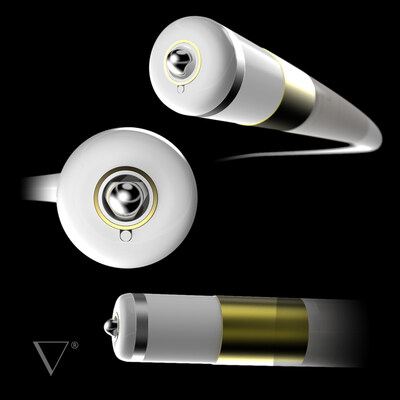January 29, 2021
Olympus Corporation (Olympus – Director, Representative Executive Officer, President and CEO: Yasuo Takeuchi) announced that it has entered into an agreement to acquire Quest Photonic Devices B.V. (Quest – CEO: Richard Meester) for up to EUR50 million including milestone payments to strengthen its surgical endoscopy capabilities.
Headquartered in the Netherlands, Quest offers advanced fluorescence imaging systems (FIS) for the medical field, enabling more surgical endoscopy capabilities, compared to conventional imaging technologies.
Fluorescence imaging refers to special light imaging technologies that utilize the properties of fluorescent dyes directed to specific anatomical structures. By using targeted dyes, in combination with specific light wavelengths, tissues or lesions that are nearly invisible under normal white light become visible. Olympus Corporation existing laparoscopic imaging system, VISERA ELITE II, is already equipped with fluorescence imaging technology. VISERA ELITE II uses near-infrared light to identify blood vessels or lymph nodes under the surface tissues, aiming to assist surgeons in performing safer procedures with lower complication risks. The Quest technology acquired is intended to expand opportunities for Olympus Corporation in this field.
Making the Invisible Visible: Quest offers innovative technologies for multi-spectral imaging and imaging systems for medical applications, ranging from fluorescence imaging to photodynamic therapy. The acquisition strengthens Olympus’ position as a world leader in medical imaging solutions, and delivers innovative capabilities (including 3D and 4K imaging) to surgeons, to “make the invisible visible.”
Quest’s lead product line is the Quest Spectrum Fluorescence Imaging System, which enables fluorescence-guided surgery for open and minimally invasive procedures. Kanichi Matsumoto, global head of Surgical Endoscopy at Olympus, said: “We are delighted to incorporate Quest’s advanced FIS capabilities into our comprehensive medical imaging portfolio. The combination of the Quest Spectrum product line’s leading FIS technologies with Olympus’ existing laparoscopic imaging system VISERA ELITE II will enable Olympus Corporation to offer surgeons a wide range of high quality fluorescence imaging solutions.”
New Applications and Market Growth
The global market for FIS devices is expected to grow at a compounding annual rate of more than 12%, from around US$310 million in 2018 to over US$827 million in 2027*. Increasing demand for minimally invasive procedures and reconstructive surgery is helping to drive FIS growth worldwide. Furthermore, application of the FIS technology is expected to expand over the coming years, as additional fluorescent dyes are paired with targeted antibodies. Among other applications, molecular imaging will allow healthcare professionals to visualize cancerous lesions in vivo and perform cancer surgery in unprecedented ways, potentially lowering recurrence rates.
Quest also works with biotechnology companies that are developing next-generation molecular imaging dyes. These innovative dyes may enable Quest’s technology to advance diagnostic opportunities in fluorescence-guided cancer surgery.
*Source: Transparency Market Research; Near-Infrared Fluorescence Imaging System Market Global Industry Analysis, Size, Share, Growth, Trends and Forecast, 2019-2027.


